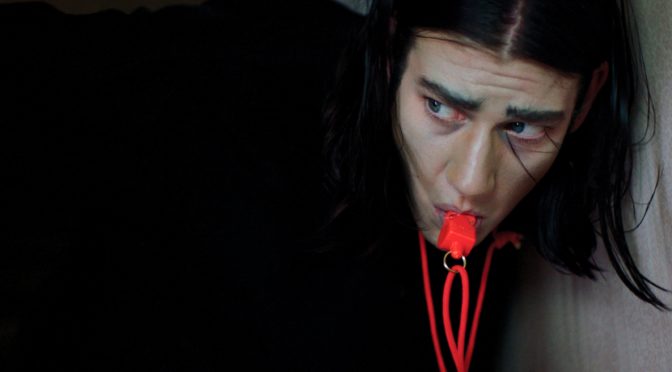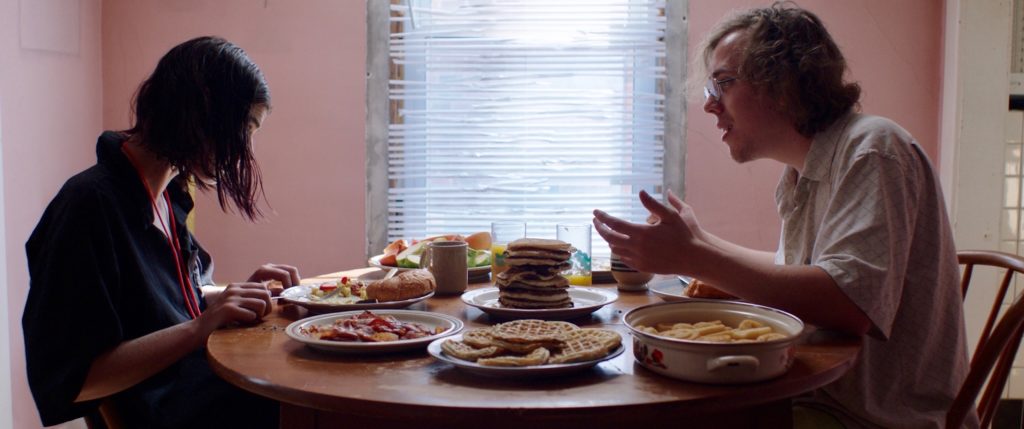Article by: Silvia Gentile
Translated by: Chiara Franceskin
Not only as the protagonist in the film Raf (Harry Cepka), Grace Glowicki also participates in Torino Film Festival as a director with her first feature film, Tito.
Tito (interpreted by Grace Glowicki herself) is a misfit, an outcast who, after having suffered violence, lives isolated in his house with sparing furniture. He is haunted by scary sounds and imaginary monsters that seem to be in ambush wherever he is. Tito is also tormented by a physical illness that prevents him even from eating. Suddenly a “friendly neighbour” (Ben Petrie) – as he is presented in the opening credits – appears in his house. He talks incessantly, and Tito feeds him, makes him take drugs, and, for a while, he seems to get him out of his solitude and fear, but actually he will reveal himself as another of his executioners.
Grace Glowicki reduces the plot to its essential, in order to give space to Tito’s discomfort and to his routine: his two strange friends are the only protagonists of the entire film, while the faces of the other figures that appear on-screen are never shown.
The performance of the director, who engages herself also as an actress in the lead role, is very impressive. As she stated at the press conference, Glowicki decided to play the role of a man to carry out a game of role reversal: the aim was to claim back the feminine fears and anxieties that are very often performed and invalidated by actors and male directors.

In order to express Tito’s malaise, the director uses some expressive codes that, to some extent, recall the aesthetic of silent movies, especially in the use of the body as an expressive vehicle.
Glowicki paid particular attention to her performance: in order to play a person who is physically distorted by trauma and fear, she imprisoned her figure in contorted and unnatural positions, almost monstrous. Music is intentionally intrusive and disturbing and, since the protagonist is almost silent, the film is not based on the weight of the words. Here, the sound needs to let the audience understand Tito’s violent and exaggerated emotions, both when he is terrified and when the drugs taken seem to give him a little relief from anxiety.
There is another recalling of silent movies, i.e. when the protagonist is imprisoned in a dream-like dimension, he is illuminated by a yellow light which erase any other colour, and he is framed by a sort of mask that eliminates any other surrounding element.
At the end, the audience can see an enigmatic overlap of victims and perpetrators – an emblematic climax of the ambiguity and the disturbance that characterise the whole movie.
Silvia Gentile
Chiara Franceskin


